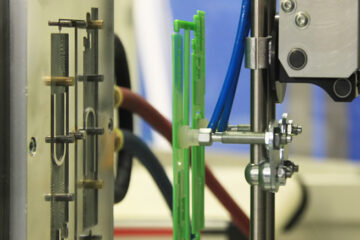It’s 2023 and we are seeing an unprecedented rate of growth and development in sustainable technologies. With the world becoming more aware of the impact of climate change and the urgent need to reduce our carbon footprint, the demand for green technologies is at an all-time high. From electric cars to renewable energy sources, the market for sustainable products and services is rapidly expanding.
In this article, we will explore the latest advancements in green technologies and how they are transforming the way we live, work and play. We will take a deep dive into emerging trends, technologies and innovations that are shaping the future of sustainability.
Green Technology: A Few Examples
Here is a selection of innovative technologies that can help protect the planet beyond just solar panels and wind turbines:
- Water treatment and purification: Recycling water for drinking or other purposes.
- Recycling and waste management: Reducing the impact of landfills.
- Waste-to-energy: Generating electricity by burning landfill waste.
- Electric transportation: Using electric vehicles like cars, buses, trucks, and scooters.
- Programmable thermostats: Saving energy by programming temperatures when not at home.
- Self-sufficient buildings: Structures that generate enough energy to power themselves, usually through solar panels.
- Low-carbon construction: Developing buildings with smaller footprints and made from energy-efficient green materials.
- LED lighting: Extremely energy-efficient light bulbs.
- Vertical farming: Using less water and land to grow crops, especially in cities.
- Composting: Turning food waste into fertiliser.
- Wave energy: Generating electricity from ocean waves.
- Batteries: Storing energy is critical in the shift to renewable energy sources.
- Green materials: Using renewable, locally sourced materials like bamboo, hemp, and straw.
- Carbon tracking software: Software that calculates a company’s carbon emissions.
What distinguishes Green tech, Clean tech, and Climate tech from each other?
Clean technology is a wide-ranging classification that involves approaches that enhance productivity and efficiency, as well as decrease any negative ecological impact. These approaches include advancements such as clean energy, waste management, wastewater treatment, and others.
On the other hand, climate technology deals with issues exclusively related to human-caused climate change. It basically refers to any technology that aims to alleviate the effects of greenhouse gas emissions. Although clean technology includes water treatment and waste management, these do not qualify as climate technology.
Top 5 Upcoming Green Tech Innovations to Look Out For in 2023
Low-carbon construction
Intelligent and eco-friendly constructions are becoming increasingly prevalent, and rightfully so. Conventional buildings and their construction contribute to 38% of global greenhouse gas emissions, hence the importance of low-carbon buildings. These buildings are specifically engineered to emit minimal carbon during their entire life span, produce minimal waste and pollution, and are built from sustainable materials such as bamboo and hemp. Furthermore, they are usually self-sustaining, generating their own energy through solar panels installed on the roof. Given the current high demand for construction, it is crucial to promote low-carbon buildings to pave the way for a sustainable future.
Carbon capture and storage
Although carbon offsets are important in mitigating global warming, they alone cannot limit the increase in global temperature to less than 1.5°C. To achieve this, it is necessary to physically extract carbon that is already present in the atmosphere.
Carbon capture and storage technology is one approach to accomplish this goal. It involves capturing carbon from the atmosphere and converting it into synthetic fuel. Currently, this technology is costly and limited in scope. However, according to a study by Stanford University, the expenses of this technology could potentially decrease by a factor of six, making it more scalable in the future.
Renewable energy storage
A major challenge in the shift towards renewable energy is ensuring a consistent supply of clean energy even during extended periods of cloudy or windless weather. This requires cost-effective, long-term energy storage solutions capable of storing large amounts of energy for extended periods. Numerous innovative companies, such as Aquion Energy, Malta (Google X), and Highview Power, are currently creating distinctive storage options specifically designed for the power produced by renewable sources. With the declining use of fossil fuels and the increasing demand for renewables, the need for effective storage technology is becoming more critical.
Regene
Hydrogen
You’re already familiar with battery-powered electric vehicles, but there’s another kind of electric vehicle, and it’s known as a fuel cell electric vehicle. This results in significantly higher efficiency than vehicles powered by combustion engines, and they also have the added benefit of producing zero harmful emissions.
Conclusion
As we conclude our exploration of the world of green technologies, it is evident that the industry is growing at an unprecedented pace in 2023. With new advancements and innovations emerging each day, the future looks bright for sustainable living.
The growing demand for sustainable products and services is a clear indication of the need for change in our approach to energy and resource consumption. It is heartening to see individuals, governments and businesses alike taking proactive steps towards reducing their carbon footprint and embracing eco-friendly practices.
The rapid development and adoption of green technologies are creating opportunities for entrepreneurs and businesses to lead the way towards a more sustainable future. As consumers, we also have the power to drive change through our purchasing decisions and daily habits.



